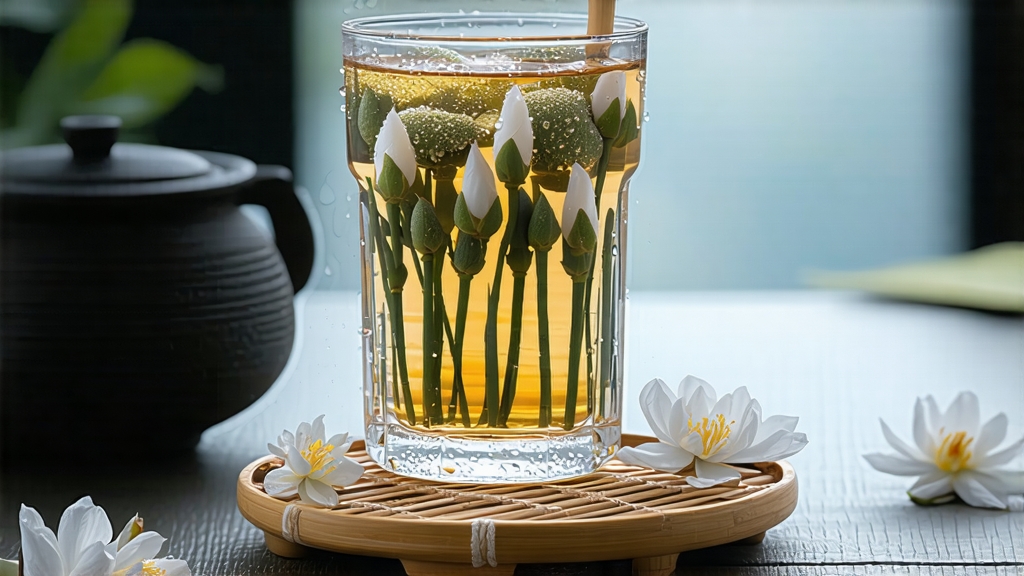
White tea is the most minimally processed of all China’s six great tea families, and within that quiet realm Fuding Silver Needle—Bai Hao Yin Zhen—stands as the purest expression of leaf, air, and time. To understand it is to step into a world where fragrance is whispered, not declared, and where every sip carries the coastal mists of northern Fujian Province.
A Brief, Misty History
The first written record of “white tea” appears in Song-dynasty treatises of 1064 CE, yet those texts speak of a compressed cake made from selected buds, not the loose, feather-light strips we steep today. The modern pedigree of Silver Needle begins in the 1790s around the town of Taimu Mountain, Fuding County, when tea makers discovered that the local Da Bai Hao cultivar—literally “Big White Down”—possessed buds so plump with amino acids that they could be simply air-dried and still deliver a sweet, mellow liquor. Coastal trade routes carried the novelty to Guangzhou, then to European apothecaries who prized it as “white China herb.” By 1891 Fuding Silver Needle was served at the Russian imperial court, earning the nickname “the aristocrat of teas,” a title it still wears with unassuming grace.
The Cultivar: Da Bai Hao
All true Silver Needle is plucked from the Da Bai Hao bush, a tea plant whose young buds can reach 2.5 cm in length and are sheathed in a silvery fleece so dense it resembles hoarfrost. The cultivar is sensitive to terroir: grown at 200–600 m on red granitic soils washed by East China Sea clouds, the bush develops higher theanine and lower catechins than its inland cousins, translating into a naturally sweet, almost marine umami with none of the grassy bite common to lesser white teas.
Harvest Calendar: One Dawn, One Leaf
The picking window is brutally short—usually five to seven clear days around late March—when the bud is still closed like a slim bamboo shoot and the night temperature hovers between 8 °C and 15 °C. Experienced pluckers break the bud with the nail of the thumb and forefinger rather than pulling, ensuring the tiny “fish-tail” leaf base remains intact. A full kilogram of finished tea demands roughly thirty thousand buds, all gathered before ten o’clock so that the morning dew acts as a natural protective film against oxidation en route to the withering loft.
Withering: The Invisible Craft
Unlike green tea, Silver Needle never touches a wok or steamer. Instead, the buds are laid in single layers on bamboo trays stacked inside a sun-warmed, breeze-ventilated loft. For forty-eight to sixty hours the tea master becomes a meteorologist, adjusting louvered windows every half hour to coax moisture from 75 % down to 8 % without ever letting the leaf temperature exceed 35 °C. The goal is enzymatic browning so gentle that the bud remains ivory, yet develops honey, hay, and water-melon rind notes that will later bloom in the cup. When the bud snaps cleanly and the fine hairs release a faint popcorn aroma, the tea is considered “naturally complete.” No rolling, no roasting, no second drying—just a slow conversation between leaf, air, and time.
Grading & Ageing
Silver Needle is classified into three commercial grades: Supreme (all buds 2 cm or longer, 95 % downy), Fine (1.5–2 cm, 90 % downy), and Standard (shorter, mixed with one unfolded leaf). Connoisseurs, however, look beyond size to the “three whites” criterion: tip, stem base, and the tiny undeveloped leaf must all be cloaked in floss. Like raw pu-erh, Silver Needle can be cellared. Stored in breathable paper within a clay jar at 25 °C and 60 % relative humidity, the tea oxidizes microscopically, trading fresh cucumber notes for dried apricot, white chocolate, and a camphor coolness reminiscent of aged Riesling. A well-kept cake of 2012 Silver Needle now fetches triple the price of its younger self, yet remains subtler than any shou mei or gong mei grade.